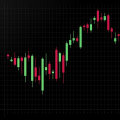Breakout signals are an essential part of forex trading, providing traders with the ability to identify important opportunities for profits. In this comprehensive overview, we will explain the fundamentals of breakout signals in forex trading and discuss the different types of signals available and how they can be used to maximize profits. We will also discuss the importance of risk management and how to use breakout signals in combination with other strategies to maximize your trading success. Finally, we will provide some tips on how to select the best breakout signals for your trading needs.
Breakout signals
are a type of signal used in forex trading to identify a possible reversal or continuation in the price direction of a currency pair.Breakouts can provide traders with an opportunity to enter the market at a point where the price is likely to move in their favor. In this article, we will discuss the different types of breakout signals, how they are used in trading, and how you can use them to make more informed decisions. The first type of breakout signal is the traditional breakout. This type of signal is generated when the price of a currency pair moves outside of an established range. This type of signal is often used by traders to identify a potential reversal in the direction of the price.
For example, if the price of a currency pair has been trading within a range between 1.3000 and 1.3050, and then breaks out above 1.3050, this could indicate that the price is likely to continue moving higher. The second type of breakout signal is the false breakout. This type of signal is generated when the price of a currency pair moves outside of an established range but fails to follow through in the intended direction. For example, if the price of a currency pair has been trading within a range between 1.3000 and 1.3050, and then breaks out above 1.3050, but then quickly reverses back below 1.3050, this could indicate that the break out was false and that the price is likely to remain within the established range. The third type of breakout signal is the trendline breakout. This type of signal is generated when the price of a currency pair moves outside of an established trendline.
For example, if the price of a currency pair has been trading within an uptrend, and then breaks out below the trendline, this could indicate that the price is likely to continue moving lower. The fourth type of breakout signal is the volume breakout. This type of signal is generated when the volume of a currency pair moves outside of an established range. For example, if the volume of a currency pair has been trading within a range between 50,000 and 100,000 contracts per day, and then breaks out above 100,000 contracts per day, this could indicate that there is increased interest in the currency pair and that the price is likely to continue moving higher. Breakout signals can be very useful for traders who are looking for opportunities to enter or exit the market at key points. By using these signals, traders can better identify where trends are beginning or ending and take advantage of these movements in order to maximize their profits.
However, it is important to remember that all signals are not created equal and that there may be times when breakout signals are not reliable or accurate. As such, it is important for traders to understand how to properly interpret these signals in order to make more informed trading decisions.
False Breakout Signals
False breakout signals are a type of signal used in forex trading to indicate a potential reversal or continuation in the price direction of a currency pair. Unlike true breakouts, which occur when the price of a currency pair moves outside of an established range, false breakouts occur when the price appears to move outside of the range, but is quickly reversed. False breakout signals can be used in trading to help traders identify potential reversals or continuations in the price direction of a currency pair.They can be used as an entry point for traders who are looking to capitalize on a possible reversal or continuation. For example, if a trader sees a false breakout signal forming, they may decide to enter the market at the point where the price reverses and appears to be heading in the desired direction. It is important to note that false breakout signals can be tricky to identify and are not always reliable indicators of future price movements. Traders should use caution when relying on false breakout signals and should take into account other factors such as technical analysis and fundamental analysis before making any trading decisions.
Traditional Breakout Signals
Traditional breakout signals are a type of signal used in forex trading to identify possible reversals or continuation points in the price direction of a currency pair. These signals are usually based on technical analysis, such as chart patterns or indicators, and are designed to help traders make more informed decisions about when to enter and exit the market. When looking for traditional breakout signals, traders typically look for levels of support and resistance in the chart. These levels provide clues about the direction of the price, and when a level is broken, it is often seen as an indication of a potential reversal or continuation.For example, if the price of a currency pair breaks through a level of resistance, it could be seen as a signal that the price is likely to continue rising. Conversely, if the price breaks through a level of support, it could be seen as a signal that the price is likely to continue falling. Traders can also use traditional breakout signals to identify potential entry and exit points. For example, if a currency pair has been in a downtrend for some time, traders may look for a break above a previous resistance level as an indication that the trend may be reversing and that it may be a good time to enter the market.
Similarly, if the price of a currency pair has been in an uptrend for some time, traders may look for a break below a previous support level as an indication that the trend may be reversing and that it may be a good time to exit the market. In addition to using traditional breakout signals for entry and exit points, traders can also use them to identify trends in the market. By watching for breakouts at certain levels on the chart, traders can get an idea of which direction the market is moving and adjust their trading strategies accordingly.
Trendline Breakout Signals
Trendline breakout signals are a type of signal used in forex trading to identify possible reversals or continuation of the price direction of a currency pair.They are created when a trendline, drawn through the highs or lows of a given price range, is broken. This can indicate that the existing trend has reversed or that it will continue. Using trendline breakout signals in trading can provide traders with an opportunity to enter the market at a point where the price is likely to move in their favor. By recognizing a trendline breakout, traders can be alerted to potentially lucrative opportunities.
For example, if a trader notices that a downtrend has been established by drawing a line through the closing prices, and then the line is broken when the price moves above it, this could be an indication of an uptrend reversal. Similarly, if an uptrend is established and then broken by a downward price movement, this could indicate that the uptrend is continuing. By recognizing these types of signals, traders can make more informed decisions when entering and exiting positions. Additionally, trendline breakout signals can help identify potential support and resistance levels for a currency pair.
Volume Breakout Signals
Volume breakout signals are a type of signal used in forex trading to identify a potential reversal or continuation in the price direction of a currency pair.This signal is triggered when the volume of a currency pair moves beyond a predetermined level, indicating a potential change in the trend. Volume breakout signals can provide traders with an opportunity to enter the market at a point where the price is likely to move in their favor. In order to use volume breakout signals, traders must first determine the predetermined level for each currency pair. This level is often determined by analyzing historical volume data or by observing current market activity. Once this level has been determined, traders can then use it as a trigger for entering or exiting their trades.
For example, if the historical average volume of a currency pair is 30,000 and the current level has reached 40,000, this could be an indication that the price is about to move in either direction. At this point, traders may enter or exit their position depending on which direction the price is likely to move. Volume breakout signals can be used in combination with other technical indicators or fundamental analysis to make more informed trading decisions. For instance, if a trader notices that the volume of a currency pair is increasing while the price is decreasing, this could indicate that the price is likely to reverse soon.
In conclusion, volume breakout signals are an important part of forex trading and can be used to identify potential reversals or continuations in the price direction of a currency pair. By understanding how they work and combining them with other technical indicators or fundamental analysis, traders can make more informed decisions when entering and exiting their trades. In conclusion, breakout signals are an invaluable tool for forex traders, providing them with the opportunity to enter the market at a point where the price is likely to move in their favor. By understanding the different types of breakout signals, such as traditional, false, trendline and volume breakout signals, traders can make more informed decisions about when to open or close positions. With the right strategy and knowledge, traders can use breakout signals to identify potential reversals or continuations in currency prices and capitalize on them.












Leave Reply